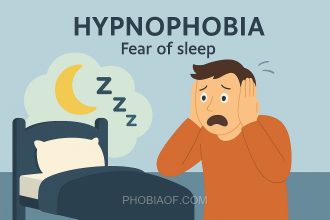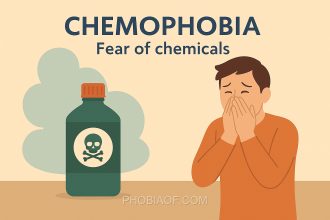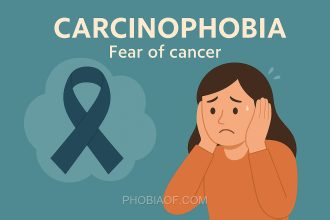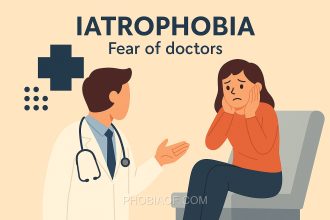Have you ever felt faint or uneasy at the sight of blood? If so, you’re not alone. Many people experience discomfort around blood, but for some, it goes beyond mere discomfort and becomes a debilitating fear known as Hemophobia.
Hemophobia, derived from the Greek words “haima” meaning blood and “phobos” meaning fear, is an intense fear of blood. This fear can be overwhelming and can lead to physical symptoms such as dizziness, nausea, or even fainting when encountering blood.
People with Hemophobia often face significant challenges in everyday situations. Simple activities like visiting a doctor, watching a medical drama on TV, or even hearing someone talk about blood can trigger anxiety or panic attacks. The fear can interfere with personal and professional life, making it difficult to handle situations where blood is present.
Understanding Hemophobia is the first step toward managing it, and recognizing its impact helps in fostering empathy and support for those affected. If you or someone you know struggles with this fear, remember that help is available, and overcoming it is possible with the right guidance and treatment.
Causes of Hemophobia
Hemophobia, the fear of blood, can stem from several potential causes. Understanding these causes can help in addressing and managing this phobia effectively. Below are some common reasons why someone might develop this fear:
- Genetic Predisposition:
Genetic factors can play a role in the development of hemophobia. If a close family member has a fear of blood or similar phobias, there might be a higher chance of inheriting these fears. Research suggests that certain phobias, including hemophobia, can be passed down through family lines.
- Traumatic Experiences:
Experiencing or witnessing a traumatic event involving blood can lead to the development of hemophobia. This could include accidents, surgeries, or medical procedures that left a lasting impression on the individual.
- Learned Behavior:
Observing others who display a fear of blood can also contribute to developing hemophobia. Children, in particular, may learn to fear blood if they frequently see a parent or caregiver reacting fearfully to it.
- Psychological and Environmental Factors:
Other psychological factors, such as general anxiety or a tendency towards overthinking, can exacerbate fears. Environmental factors, such as being in a setting where bleeding or injuries are common, might also heighten this fear.
Interestingly, some theories suggest that hemophobia could have evolutionary roots. The sight of blood might trigger a fight-or-flight response, which historically could have helped individuals stay safe from harm. While this is a theory, it provides an intriguing perspective on why this fear might be relatively common.
Understanding the causes of hemophobia is a crucial step in finding effective ways to cope with or treat the fear. If you or someone you know is struggling with hemophobia, seeking professional help can provide strategies to manage and overcome this fear.
Symptoms of Hemophobia
Hemophobia, or the intense fear of blood, can manifest in various ways, both physically and emotionally. Individuals with this phobia often experience a profound sense of fear or anxiety at the thought, sight, or mention of blood. Recognizing the symptoms is the first step towards understanding and managing this phobia.
Common Physical Symptoms:
- Panic attacks characterized by intense fear and discomfort.
- Increased heart rate or palpitations when confronted with blood.
- Sweating, especially in situations involving medical procedures or injuries.
- Shortness of breath or hyperventilation.
- Dizziness or feeling faint, which may lead to actual fainting spells.
- Nausea or upset stomach when exposed to blood or its imagery.
- Trembling or shaking in anticipation of or during exposure to triggers.
Emotional and Behavioral Symptoms:
- Overwhelming dread or fear when thinking about blood-related situations.
- Avoidance of medical settings, such as hospitals or clinics, to prevent exposure.
- Extreme anxiety when discussing topics related to blood, injuries, or medical procedures.
- Intrusive thoughts or images of blood that cause distress.
- Difficulty functioning or concentrating due to preoccupation with the fear.
- Compromised ability to care for oneself or others because of fear of encountering blood.
When severe, these symptoms can significantly interfere with daily life, making routine activities and necessary medical care challenging to manage.
Treatment for Fear of Blood
Overcoming hemophobia, the fear of blood, is entirely possible with the right treatment and self-help strategies. With patience and dedication, you can manage and eventually overcome this phobia. Below are some proven therapies and coping strategies that can help you on your journey to recovery.
Proven Therapies
- Exposure Therapy: This therapy involves gradually facing the fear of blood in a controlled and safe environment. With time, this gradual exposure can reduce the fear response and help you become more comfortable with the sight of blood.
- Cognitive-Behavioral Therapy (CBT): CBT helps change the fearful thoughts associated with hemophobia. By identifying and challenging these thoughts, you can develop healthier thinking patterns and reduce anxiety.
- Counseling: Speaking with a counselor can provide emotional support and help you understand the root causes of your fear. This understanding can be crucial in overcoming the phobia.
Self-Help Coping Techniques
- Relaxation Exercises: Techniques such as deep breathing, progressive muscle relaxation, and visualization can help calm your nervous system and reduce anxiety.
- Meditation: Regular meditation practice can improve your overall mental health, decrease anxiety, and enhance your ability to manage fear.
- Support Groups: Joining a support group can provide a sense of community and understanding. Sharing experiences with others who have similar fears can be incredibly reassuring and motivating.
In some severe cases, medication such as anti-anxiety medications might be prescribed by a healthcare professional to help manage symptoms. However, the focus should primarily be on therapy and developing coping skills.
It’s important to remember that you are not alone in this journey. If hemophobia is interfering with your daily life, I encourage you to seek professional help. A mental health professional can guide you through these treatment options and support you every step of the way.
With time and the right approach, you can overcome your fear of blood and lead a more fulfilling life.
Conclusion
Understanding hemophobia is a crucial step in overcoming the fear of blood. By recognizing its causes and symptoms, individuals can empower themselves to face their phobia with a sense of preparedness and knowledge. Awareness is the first step toward empowerment, and with it, those affected can begin to take control of their experiences.
It’s important to remember that many people successfully manage or overcome their phobias with time, patience, and the right support. Hemophobia, like other phobias, is not insurmountable. With a combination of self-help strategies and professional guidance, individuals can make significant strides toward leading a less fearful life.
If you or someone you know is struggling with hemophobia, consider reaching out for professional support. Therapy or a conversation with a healthcare provider can provide valuable insights and strategies tailored to your needs. Remember, seeking help is a courageous step toward a healthier and more fulfilling life.
You’re not alone, and with the right tools and support, overcoming hemophobia is entirely possible. Embrace the journey with optimism, knowing that brighter days are ahead.






